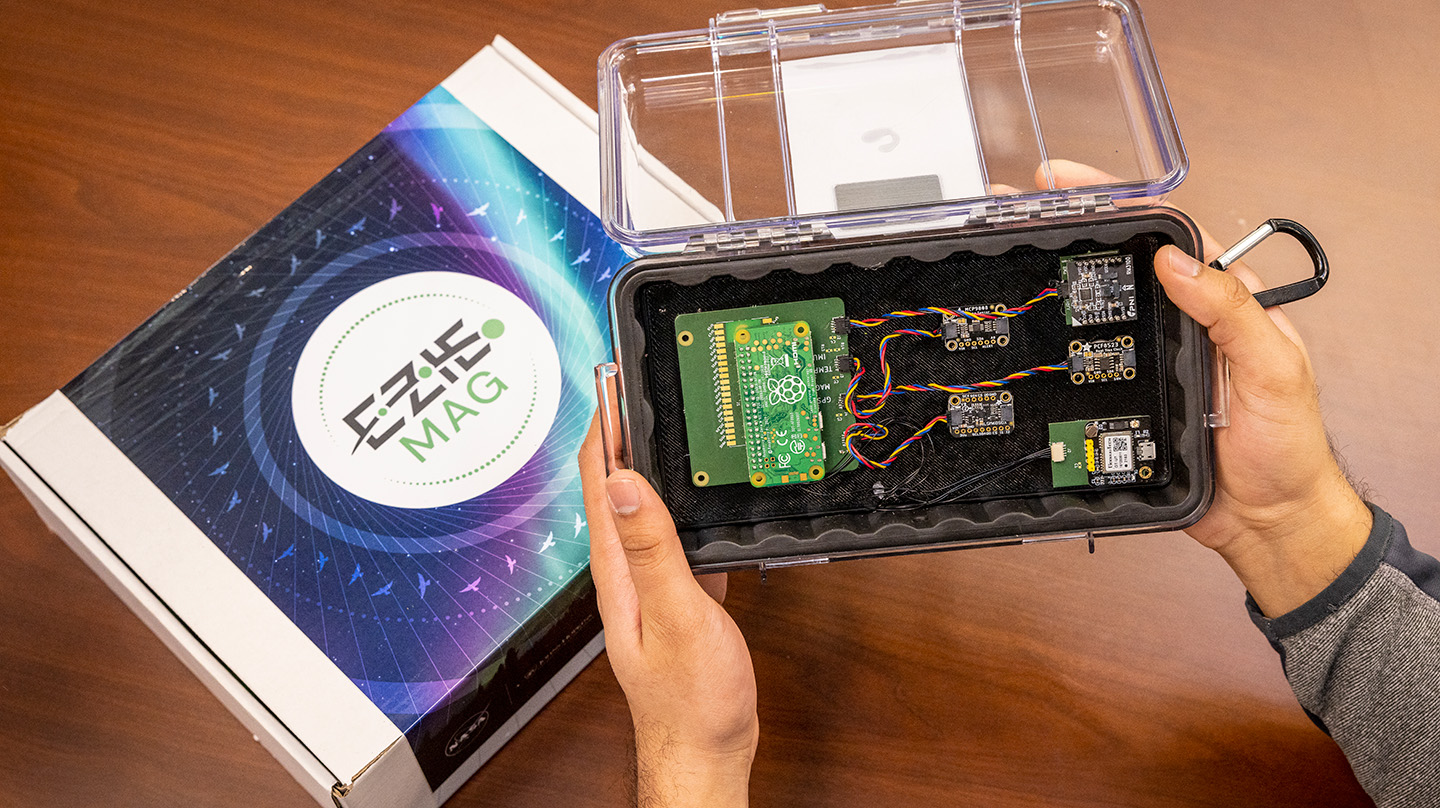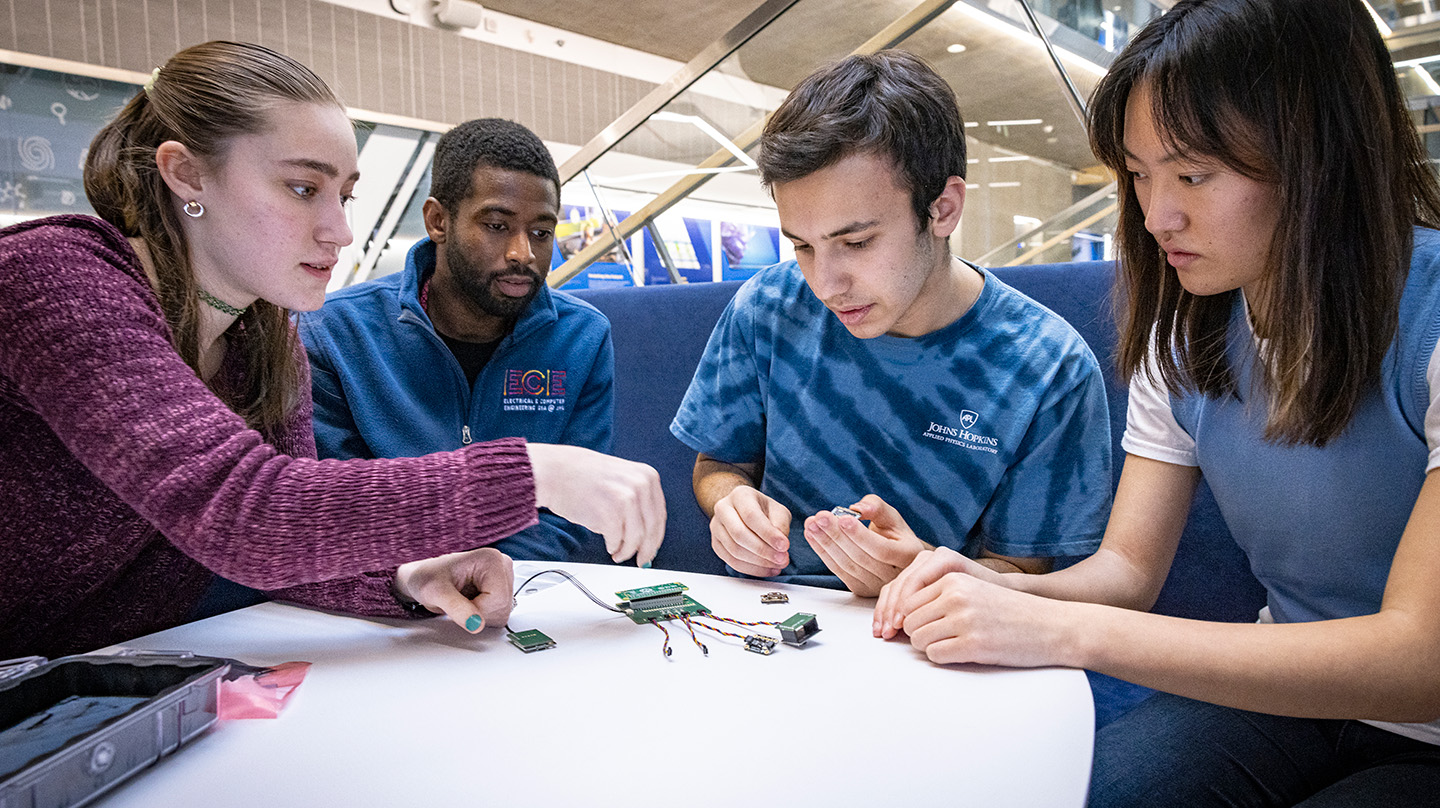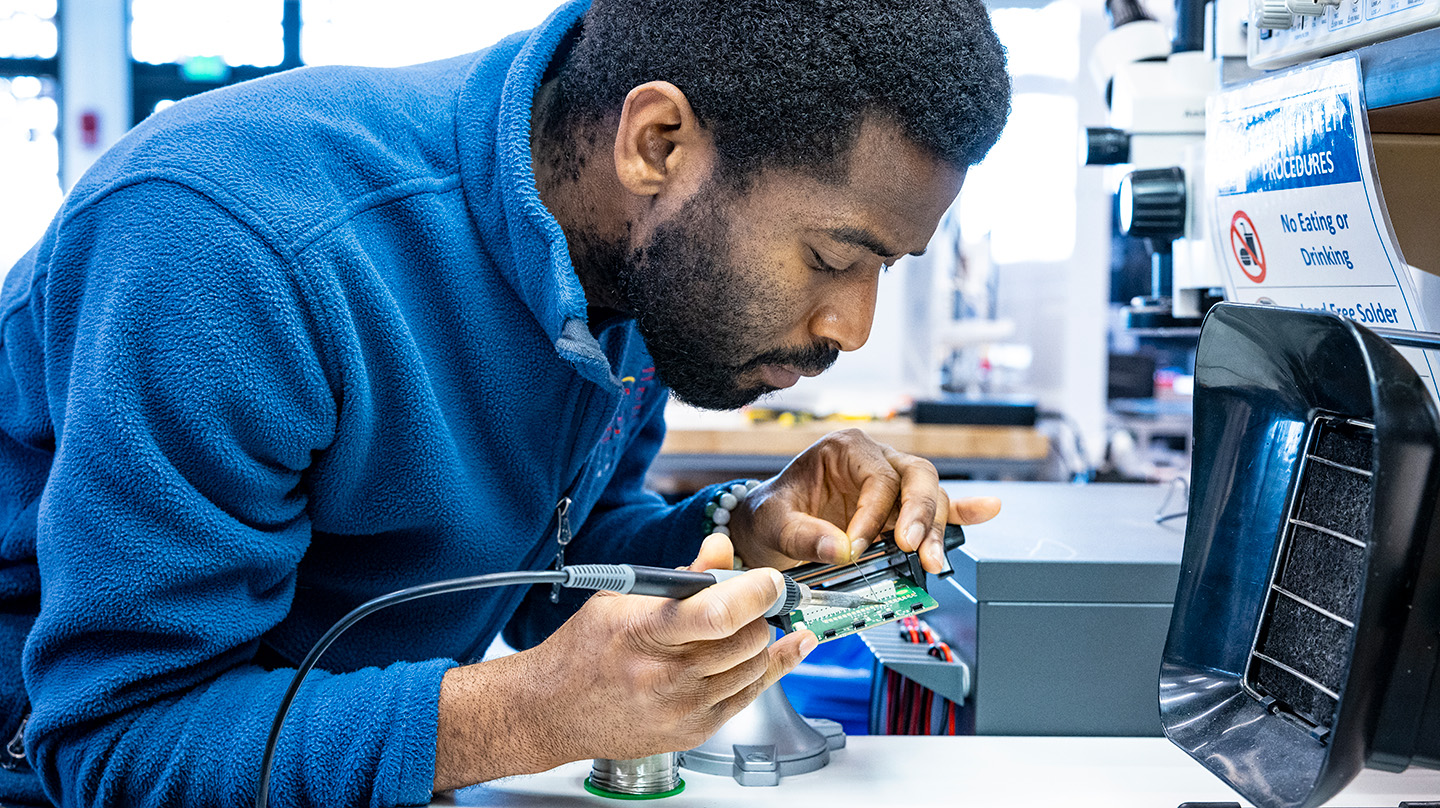
NASA’s Electrojet Zeeman Imaging Explorer (EZIE), scheduled to launch in late 2024, will image the magnetic fingerprint of the electrical currents that flow in the upper atmosphere and between Earth and the surrounding space.
But it’s not just EZIE scientists who will study those connections — you can too. Researchers, students and anyone interested in how Earth interacts with space can be a contributing member of the EZIE team.
Before launch, the EZIE team at Johns Hopkins Applied Physics Laboratory (APL) in Laurel, Maryland, will make and freely distribute approximately 700 magnetometer kits (nicknamed EZIE-Mag) to teachers and students across the United States, with a specific focus on Indigenous schools.
These kits will let students build their own science-quality magnetometers. These lunchbox-sized instrument suites allow anyone to make measurements, which will be combined with EZIE’s measurements made from space to finally unlock the mysteries associated with this vast electrical current circuit.
“EZIE-Mag provides the mission with a unique opportunity to engage citizen scientists in this important research,” said Dr. Nelli Mosavi-Hoyer, project manager for EZIE at APL. “Measurements made by these kits will be complementary to data collected by the three EZIE spacecraft.”
The EZIE Mission
EZIE is APL’s first mission to image the magnetic fingerprints of Earth’s auroral electrojets, electrical currents that flow between Earth and space.
The mission will star a trio of CubeSats, satellites roughly the size of a small suitcase, designed to move pole to pole and map the electrojets.
Once the electrojets are mapped, scientists will have greater insight into the physics of Earth’s magnetosphere, as well as of any magnetized planets in our universe. The mission will also help scientists create better models for predicting space weather, phenomena from auroras to geomagnetic storms fueled by the Sun.
The EZIE mission is funded by the Heliophysics Division within NASA’s Science Mission Directorate and is managed by the Explorers Program Office at NASA’s Goddard Space Flight Center in Greenbelt, Maryland.
APL designed the spacecraft and will lead and manage the mission. NASA’s Jet Propulsion Laboratory will build an instrument called the Microwave Electrojet Magnetogram for each of the three satellites, and Blue Canyon Technologies in Boulder, Colorado, will design the CubeSats.

The Origins of EZIE-Mag
APL’s Rob Barnes, EZIE ground systems engineer, and Dr. Jesper Gjerloev, EZIE project scientist, had been brainstorming ideas for affordable, ground-based magnetometers deployed to anyone with an interest in science well before EZIE.
However, finding the right technology to reproduce effects similar to magnetometers — which typically cost between $25,000 and $500,000 — proved challenging.
“It should be inclusive, not exclusive,” said Gjerloev of access to magnetometers. “The problem was that it just wasn’t feasible.”
Then, on a whim, Barnes contacted a company that had created a sensor capable of making measurements on the ground for a lower cost. Inspired by work he’d done with his niece and nephew for science fair projects, Barnes enlisted a Raspberry Pi, a small, single-board computer.
Barnes then added extra features such as GPS to determine time and location, put it all together, and created the first version of what would become EZIE-Mag.
The cost? Roughly $200.
“When we distribute EZIE-Mags, the data that’s going to come in from all these schools and places is actually going to be included as part of the mission database,” Barnes said. “We’re going to do real science with it.”

A Moment of “Vindication”
One of the EZIE-Mag’s first real tests was when Barnes placed it in his backyard during a storm, then compared the results gathered from the kit to data from a magnetometer run by the U.S. Geological Survey in Fredericksburg, Virginia. The results were nearly identical.
“That was kind of vindication,” said Barnes. “Whenever we talk to the scientific community and say, ‘Hey, we’ve got this really cheap magnetometer that can do this,’ they’re like, ‘You can’t possibly reproduce a $100,000 magnetometer for like a few bucks.’ And we go, ‘here’s the results.’ That’s kind of cool.”
The EZIE-Mag will produce science-quality measurements complementing the more precise results generated by science-grade magnetometers. The next step for the EZIE team: figuring out how to mass produce and distribute the kits.
The team recruited Adebayo Eisape, an electrical engineering doctoral student at Johns Hopkins University, to help formalize the process of developing EZIE-Mag so that each kit is easy to assemble.
“You get all the parts and they just snap together, and you’re done,” said Barnes.
Eisape worked on getting the design for EZIE-Mag assembled, fabricating a printed circuit board, and prepping the kits for mass distribution. The team collaborated with APL’s Research and Exploratory Development Department to help build out hundreds of kits to hand out.
Because EZIE-Mag required the team to focus on optimizing for the end user instead of for the tool’s ultimate purpose, the process shifted Eisape’s thinking about design.
“It’s significantly different because you’re not just designing a thing for you to do your thing,” said Eisape. “You’re now designing a thing for everyone to be able to do a thing. It’s not just designing a super bespoke testing board or interface card. Now this needs to work, and it needs to work for everyone all the time.”

“EZIE” Access to Science
But it’s more than just a simpler assembly that makes EZIE-Mag unique. One goal of the mission is to make science more inclusive by reaching out to underserved communities, notably Indigenous communities, to help break down those barriers to access.
The EZIE mission is partnering with the Indigenous Education Institute and Little Singer Community School — a pre-K to eighth-grade school for the Navajo Nation — on the MakerPlace Program, which created five Indigenous-based, collaborative workspaces where students can learn and explore STEM (science, technology, engineering, and math) topics.
The EZIE team is also reaching out to schools in underserved communities to provide an EZIE-Mag and allow young scientists to not only participate in the mission but also see the possibility of a future working in science.
“They’re actively participating, providing data that is used in our solutions,” said Gjerloev. “As a middle schooler or high schooler, you can say, ‘I’m actually providing data and making measurements that are important and being used for a NASA mission.’ That’s the way it should be. It’s much more exciting than sending out a flyer.”
Related Topics
Engineering
For Media Inquiries
For all media inquiries, including permission to use images or video in our gallery, please contact:
Michael Buckley
All Media Resources

